| Umělec magazine 2009/2 >> The Art Market Vs Off-Spaces: up-to-date forms of art production | List of all editions. | ||||||||||||
|
|||||||||||||
The Art Market Vs Off-Spaces: up-to-date forms of art productionUmělec magazine 2009/201.02.2009 Walter Seidl | art market | en cs de |
|||||||||||||
|
In a Western capitalist world, art production forms miscellaneous structures concerning scope and content—ideas that tend to overlap at some points but also burgeon out in order to pursue opposing trends. The continuing trend has become that artworks are being valued primarily based on their monetary values and a there is a disconnection from works of that demand a critical attention; arts that press boundaries are moving from dominating art institutions to being placed in niches. Art’s archetypal goal, to engage society with a critical and radical point of view, is becoming increasingly pushed aside by monetary interests. Art has come to represent a decorative accessory for well-heeled collectors. The prominent question becomes, to what extent is art capable of scrutinizing these plutocratic authorities while demonstrating the imperative of aesthetic and political perspective when it is operating using a structure that is beyond mass appeal? The intention of this text is to examine the developments in Central and Eastern European art with this context in mind.
The development of the international art market in the last decade has created hype that has prolonged the phenomenon of artist-stars to market products. Originally created in the Pop-Art era, this trend has reduced the critical distance between artist and society, allowing the seamless transition of art from an expressionistic to a capitalistic system. The names and works of artists are treated as status symbols that have enabled members of the upper class to collect work based on the name that it is associated with, but also developing a specific predilection towards the content. This tendency is most common in the American market, which is increasingly enhancing the superficiality of art and has phased out critical potential in the majority of cases. New artists are only accepted as by galleries if they are able to bring with them new groups of buyers and, hence, promote the space’s business stream. Exhibitions are big events, dependent on gallery loans intended to boost turnovers by affiliating as an institution with the artist name-brand. At the Whitney Biennial of 2008, there were almost no artists without a gallery affiliation represented, thus the group of new curious prospective clients immediately were able to classify single artworks according to their place in the market. This makes one wonder if exhibitions hereby have become a catalogue of goods with a good pedigree? The situation in Europe seems a little different because it has newly configured itself in the last decade. It attempted to abolish the distinction between East and West, offering fresh substance of artistic production. Inclusion of artwork created under the rule of the non-dominant political ideology has always provoked opposition by those in the majority. Thus becoming common property that begins to circulate in the market and dissolves the status of the formerly “other.” In the latest publication of Re-Politicizing Art, Theory, Representation and New Media Technology, Marina Gržinić analyzes the dissolution of the East-West paradigm by adjoining new state, s in the European Union; eliminating the enumeration of individual details but transferring them into the Western collected arrangement as a singular entity. Gržinić cites Alain Badiou who concludes even after the entire enumeration of elements of a democratic norm, everything is subordinated to the single logic of capital in a Western European and North American sense.1 This leads automatically to the omission of “the other,” in terms of Jacques Lacan, because this represents the negation of the original identity while simultaneously making a significant contribution to its genesis. Ultimately, this otherness is not wiped out but finds itself, in the case of Eastern Europe, in a multitude of combinations. How then can Eastern Europe maintain its position of otherness without completely forsaking its acceptance by a capitalist world? Gržinić refers to Lacan’s thesis of Lamella, as an immaterial creature which is indestructible without being involved in a symbiotic relationship.2 What do these mechanisms reveal about themselves within Europe as a whole, and how will this fit into the current artistic system of representatives? We can look to the integration or assimilation of Eastern European Art—whether you are considering the subject as euphemistic or complaisant. Austria is regarded, beyond doubt, as an intermediately country, a spies’ meeting point during the cold war, which has always been located in the area of conflict between East and West; the country has become more interested in art production in its Eastern neighboring countries which has evolved since the 1990s, when official institutions such as KulturKontakt and the journal Springerin in Vienna and off-spaces such as Raum für Kunst or its successor institution These institutions represent art for art’s sake and less for its marketability; this is possible with the benefit of grant or other public support. Furthermore, the originally German phenomenon of the Kunstvereine offers an independent platform for artistic expression. In such spaces it is still possible to realize socio-political projects which offer critical discussion of hegemonic structures. The augmented attempts to exhibit art of Eastern and South Eastern Europe lead to an increase in the importance of these artists in the international scene. Mainly large exhibitions like “In Search of Balkania” (Graz 2002) or “Blut und Honig” (Wien/Klosterneuburg 2003) present a selection of the most important artists and works of the region and represent them as vital new discoveries by curators. Peter Weibel was working together with these artists as curator of “In Search of Balkania” within the framework of steirischen Herbst, which was held periodically as part of the Trigon exhibition with a focus Yugoslavia since 1963. Meanwhile, Harald Szeemann tried to establish himself with “Blut & Honig” as discoverer of these artists without appreciation or knowledge of their preceded presence in the Austrian off-spaces at this point of time. This phenomenon of political and artistic balance of power, which was continued by René Block with “In den Schluchten des Balkan” in Kassel in 2003, helped the many artists that appeared in one of these three mega exhibitions find each other again in the market of European and American institutions. This gesture was pursued by the Erste Bank group and the Generali Foundation, as well as Tate Modern and the Centre Pompidou a few years later. It thereby strengthened a distinction between the high-priced US American style gallery and the politically ambitious and artistic potential of reflecting on artwork and its historical relevance. Moderna Galerija in Ljubljana is one of the few Eastern European institutions in possession of a large collection of artworks from this region. The curators of the new museum of modern arts in Warsaw, currently under construction, intend to create another large collection with the emphasis on the geopolitical conditions of Central and Eastern Europe. Does it therefore appear that the artwork stemming from Eastern Europe is slowly penetrating art’s current capitalistic operating structures? The increase of in gallery represented artists and the rise in prices through exhibitions like documenta 12 and Art Basel prove that there is an attempt within the market to find new borders and frontiers in order to to satisfy the interests of collectors. This leads in turn to the fact that the capitalistic centers of the world define what is allowed to advance in the socially accepted canon. Former anti-hegemonic structures are within economic hegemonies, the result of which makes it difficult to find critical artistic approaches. This is due to the fact that most of these are already embedded in a process of integration in the market by curators and galleries. 1 Vgl. Marina Gržinić. Re-Politicizing Art, Theory, Representation and New Media Technology, Vienna: Schlebrügge Editor, 2008, S. 74f.
01.02.2009
Recommended articles
|
|||||||||||||
|
04.02.2020 10:17
Letošní 50. ročník Art Basel přilákal celkem 93 000 návštěvníků a sběratelů z 80 zemí světa. 290 prémiových galerií představilo umělecká díla od počátku 20. století až po současnost. Hlavní sektor přehlídky, tradičně v prvním patře výstavního prostoru, představil 232 předních galerií z celého světa nabízející umění nejvyšší kvality. Veletrh ukázal vzestupný trend prodeje prostřednictvím galerií jak soukromým sbírkám, tak i institucím. Kromě hlavního veletrhu stály za návštěvu i ty přidružené: Volta, Liste a Photo Basel, k tomu doprovodné programy a výstavy v místních institucích, které kvalitou daleko přesahují hranice města tj. Kunsthalle Basel, Kunstmuseum, Tinguely muzeum nebo Fondation Beyeler.
|


























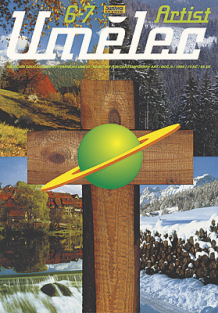




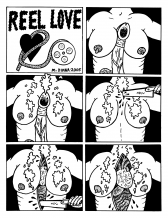
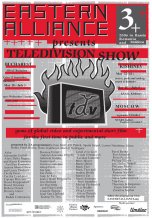
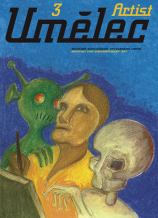
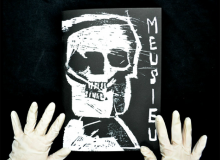


 New book by I.M.Jirous in English at our online bookshop.
New book by I.M.Jirous in English at our online bookshop.
Comments
There are currently no comments.Add new comment